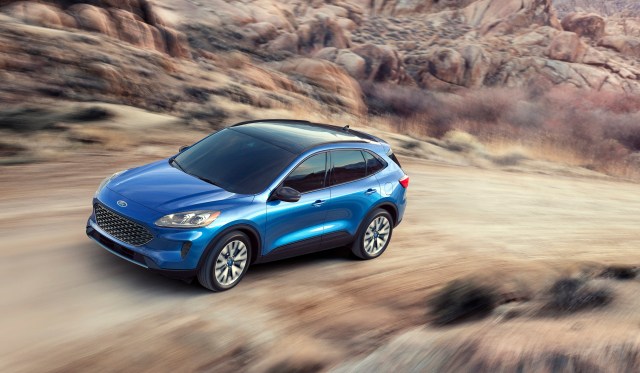It wasn’t too long ago – about five years – that more car models were available to new-vehicle shoppers than crossover/SUVs.
But the car wars are over and, apparently, crossover/SUVs have won.
Two years from now, new-vehicle shoppers will have more crossover/SUV model choices than car and truck choices combined, according to a recent prediction by Bank of America/Merrill Lynch.

More than ever, in fact, with automakers expected to produce 120 crossover/SUV models in 2021, rising to 133 in 2022 and about 150 a year after that. Over that same period, the number of available car models will comprise as few as 58 existing and new combined.
New crossover/SUVs alone will account for 110 models over four years (2020-23), with 49 of them luxury vehicles – Mercedes-Benz accounting for nine over that period.
But that also means 61 new models will be mainstream vehicles, with the most from Ford and Nissan, six each, followed by Kia, Mazda and Jeep, five each, and Honda and Hyundai, four each. Volkswagen, Chevrolet and Mitsubishi each will produce three new crossover/SUV models over those four years. Four other brands will produce two new models and nine will make just one new model.
Following are the anticipated crossover/SUV models by year and segment:
New models – 2020
Hyundai Venue (compact)
Ford Escape (small)
Mazda CX-30 (small)
Honda Passport (midsize)
Volkswagen Atlas Cross Sport (midsize)
Kia Telluride (midsize)
Ford Explorer (large)
Toyota Highlander (large)
Hyundai Palisade (large)
New models – 2021
Nissan Rogue Sport (compact)
Mazda CX-3 (compact)
Chevrolet Trax (small)
Ford Mach 1/E (small)
Jeep Commando (small)
Nissan Rogue (small)
Volkswagen Tarek (small)
Hyundai Tucson (small)
Kia Sorento (small)
Mitsubishi Outlander (small)
SF Motors SF5 (small)
Ford Maverick (midsize)
Nissan Murano (midsize)
Volkswagen ID Crozz (midsize)
Kia FCEV (midsize)
Tesla Model Y (midsize)
Jeep Grand Cherokee (large)
Nissan Pathfinder (large)
New models – 2022
Honda HR-V (compact)
Mitsubishi Outlander Sport (compact)
Chevrolet Electron (small)
Toyota C-CUV (small)
Honda CR-V (small)
Kia Sportage (small)
Mazda CX-5 (small)
Mitsubishi EV CUV (small)
Jeep Cherokee (midsize)
Hyundai NE/C-CUV (midsize)
Faraday FF91 (midsize)
Lucid Light/D-CUV (midsize)
Lynk 02 (midsize)
Mazda CX-7 (midsize)
SF Motors SF7 (midsize)
Honda Pilot (large)
Rivian R1S (large)
Volvo XC90 (large)
New models – 2023
Chevrolet FNR-X (small)
Fiat 500X (small)
Jeep Compass (small)
Jeep Renegade (small)
Nissan Kicks (small)
Kia Niro (small)
Subaru Crosstrek (small)
GMC Acadia (midsize)
Ford Edge (midsize)
Ford Edison EV/AV (midsize)
Honda Urban EV (midsize)
Nissan IMx EV (midsize)
Polestar 3 (midsize)
Waymo EV/AV (midsize)
Lucid Space/E-CUV (large)
Mazda CX-9 (large)
Models identified in the BOA/ML study include only all-new or next-generation vehicles – what the industry typically calls “major” product introductions. Not included are mid-cycle enhancements, where only “modest changes” are made to a vehicle, said the banking and investment company.
The study is based on numerous primary and secondary sources, said BOA/ML, including industry contacts, auto show visits, trade publications and enthusiast magazines.


